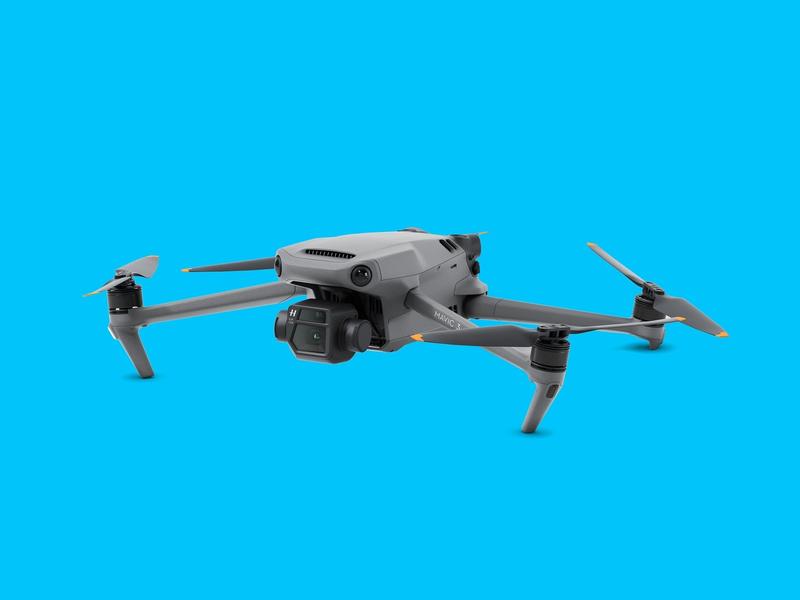DJI's drone "MAVIC 3" has outstanding professional shooting performance and excellent avoidance avoidance.
DJI seems to have omitted "Pro" from the name of the third -generation drone flagship model "Mavic", but it must not be misunderstood."Mavic 3", which has a new high -performance camera, two types of lenses, and a full manual exposure control function, has a specification for "Pro" for video shooting.It is fun to fly, but the price of $ 2,200 (253,000 yen in Japan) is not the flight performance, but the performance of the camera and lens.The drone "DJI Air 2S" is a high -resolution camera and a drone that uses a great drone with AI is a high -quality photo or video shooting, and Mavic 3 is a trick in the market drone.You can say the best.You may not need such a high performance, but it is not only fun to use if you can afford it, but also a drone that can be photographed with excellent image quality.

Equipped with a higher -quality sensor
Mavic 3 has two models.It is a standard model used in this review and a model called "Mavic 3 Cine".Mavic 3 Cine has a large built -in storage capacity (8GB for standard model SSD, 1TB for Mavic 3 Cine), and Apple's high -quality codec "Apple Prores 422 HQ".For video shooting professionals, it is important to respond to Prores, a non -revered image compression format.The reason for increasing the capacity of the SSD is also the purpose of corresponding to the file size of the video taken in Prores.The new camera sensor is the most impressive of the DJI Mavic series that has been applied to the largest and powerful models.The built -in 20 -megapixel 4/3 CMOS sensor is the largest in the Mavic series (the number of pixels is the same as the 1 -inch CMOS sensor of Mavic 2 Pro, but the increased sensor itself makes it high -definition.).As a result, Mavic 3 photographed the RAW format with 20 mega pixels, 5..It supports a 120 -frame / second video shooting with a 50 frame / second or 4K image quality with 1K image quality.The improved point is not only the size of the sensor.Mavic 3 has two types of lenses.The main lens is a 24mm single focus lens developed jointly with a long -established camera manufacturer Hasselbrad, and the aperture is F/2..Can be adjusted from 8 to F/11.In this review, I photographed 99 % of the time with this lens, but I felt it was one of the best lenses of drone lenses I used so far.The second is a 162mm telephoto lens with a 28x hybrid zoom function of digital and optics.This is a 12 -meter 1/2 inch CMOS sensor of 12 mega pixels, so the image quality is not very good.Manual control is not possible (the aperture is F/4).Fixed to 4), so you can't shoot RAW images, so the scenes used are limited.When I actually tried it, the video zoomed more than 8 times was almost useless.It is certain that it cannot be used for professional video works.It is convenient under certain circumstances, but DJI seems to have not focused on this lens so much.The video that can be taken with the main lens is very wonderful.The video taken in Mavic 3 is the best category of drone test shooting for 12 years.Mavic 3 is the first MAVIC series drone to be replaced by "DJI Phantom 4 Pro+", which has been left after it was announced in 2017 (frankly, "abandoned").Perhaps "Phantom 5" will not appear in the world, but there should be no problem because Mavic 3 is replaced.The great thing is not only image quality.The difficulty in shooting drones, especially fast -moving drones, are to keep focusing.DJI has introduced a technology called "Vision Detection Auto Focus (VDAF)" to speed up Mavic 3 autofocus.This technology is faster to focus on the focus using multiple vision sensors mounted on Mavic 3 to avoid collisions.It is not exactly how much it helps to speed up, but the focus is very fast.The focus speed is important for shooting with a large aperture, so it is a great feature.
次ページは:価値あるバッテリーの仕様変更最終更新:WIRED.jp